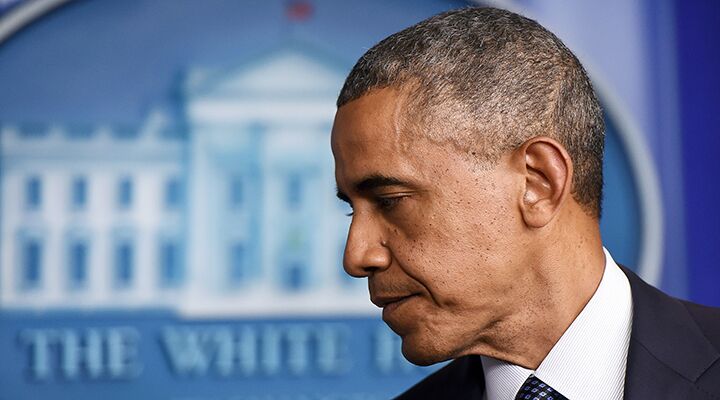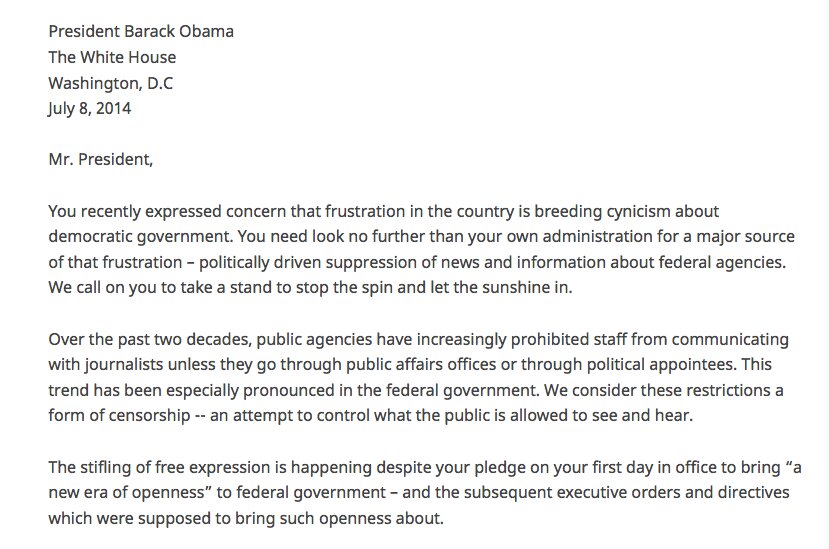
President Obama’s Failed ‘Transparent’ Promise
At the start of his presidency, United States President Barack Obama pledged that his administration would be one of the most “transparent” in American history. It is a promise often repeated, prominently displayed on the press briefing section on the White House website. “My administration is committed to creating an unprecedented level of openness in government,” the president wrote in a memorandum to the heads of executive departments and agencies. “We will work together to ensure the public trust and establish a system of transparency, public participation and collaboration.”
However, while the president says one thing, he does the opposite. On July 8, the heads of 38 journalist groups got together to write President Obama a letter expressing their frustrations with his policies, which they see as “politically driven suppression of news and information about federal agencies.”
The letter stated that, in the past, journalists were free to roam the halls of federal agencies and call staff members as they pleased, but not anymore:
Recent research has indicated the problem is getting worse throughout the nation, particularly at the federal level. Journalists are reporting that most federal agencies prohibit their employees from communicating with the press unless the bosses have public relations staffers sitting in on the conversations. Contact is often blocked completely. When public affairs officers speak, even about routine public matters, they often do so confidentially in spite of having the title “spokesperson.” Reporters seeking interviews are expected to seek permission, often providing questions in advance. Delays can stretch for days, longer than most deadlines allow. Public affairs officers might send their own written responses of slick non-answers. Agencies hold on-background press conferences with unnamed officials, on a not-for-attribution basis.
The letter went on to quote a survey that found “40 percent of public affairs officers admitted they blocked certain reporters because they did not like what they wrote.”

These journalists are not the only ones seeing a clampdown on press freedom in America. In the World Press Freedom Index for 2014, Reporters Without Borders ranked the U.S. at 46th in the world for press freedom, down 14 spots from the year before. According to the report, many hoped the Obama administration would lessen press restrictions put in place under the Bush administration following the 9/11 attacks. However, as the report notes, “There has been little improvement in [press freedom] under Barack Obama.”
Numerous incidents in 2013 contributed to the decline of America’s standing. In May of that year, it was revealed that the Justice Department had collected Fox News reporter James Rosen’s phone records and had secretly obtained two months’ worth of phone records from reporters and editors of the Associated Press. Then there was the revelation that the president has prosecuted more whistle-blowers under the Espionage Act than all prior administrations combined.
The most recent case of apparent government censorship has surfaced regarding the influx of illegal immigrants through the United States’ southern border. While the federal government has worked to reassure America that the border is secure, it has largely muzzled the press’s ability to report the facts of the crisis taking place (be sure to watch the Trumpet Daily episode titled Problems? What Problems?).
Last month, we learned that 3,000 border agents had been warned not to talk to reporters about what was going on at the border. Those who did could potentially face criminal charges. Doctors and nurses working at refugee camps were threatened with jail time if they spoke to the press.
In one specific incident on July 1, Rep. Jim Bridenstine of Oklahoma was denied access to a Health and Human Services (hhs) facility at Ft. Sill, Oklahoma, that was housing 1,200 unaccompanied illegal children. Though Ft. Sill is a federal facility in the state he represents, Brindenstine was told he would be unable to view the facility until July 21.
A press tour of the facility was scheduled, however, for July 10, but it came with strict regulations regarding what the press could and couldn’t do. Some of those rules were: No recording devices will be allowed; no questions will be allowed during the tour; no interacting with staff and children at the shelter. Reporters were not allowed to take photos either; photos were provided by the hhs after the tour. Disturbed by these efforts to stifle the media’s coverage of these centers, Brindenstine told reporters, “The American people are being given information but the only information they’re being given are from ‘official sources.’ This is the way media is conducted in the former Soviet Union, this is not the way media is conducted in the United States of America.”
This is certainly a dangerous development, considering the importance of the press to the nation. The Founding Fathers wanted a free press to keep an eye on the government to prevent tyrannical rule. They saw it as an integral part of America’s government. It was meant to be a check on government power, intended to report any abuses so citizens could be aware of what their elected officials were doing. The First Amendment was created to reflect that belief; nine of the 11 state constitutions drafted around the time of the War of Independence contained their own clause guaranteeing press freedom. The citizens of this new country saw the connection between a vigilant press and the longevity of the nation.
Today, however, the press is viewed differently. As the Trumpet repeatedly points out, America is losing its rule of law. The First Amendment is being trampled on. Instead of allowing the press to report the facts, the government demands its citizens simply believe what it tells them. This is just one example of many instances the Constitution is being maligned in America today. To understand why, download our free e-book Lawless: Why America Is Losing the Rule of Law.
